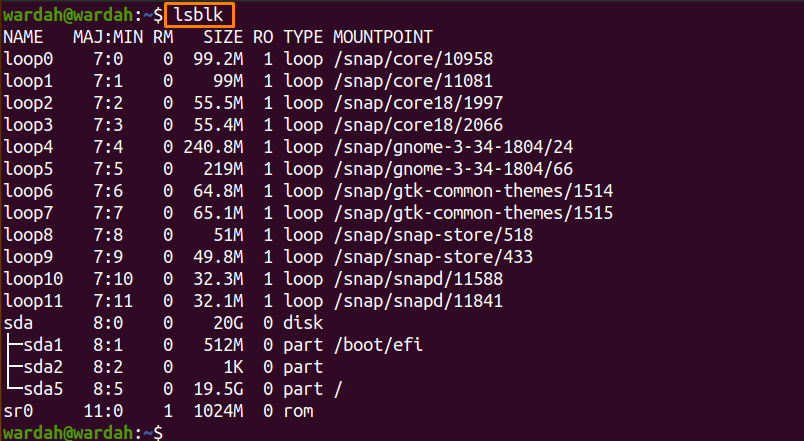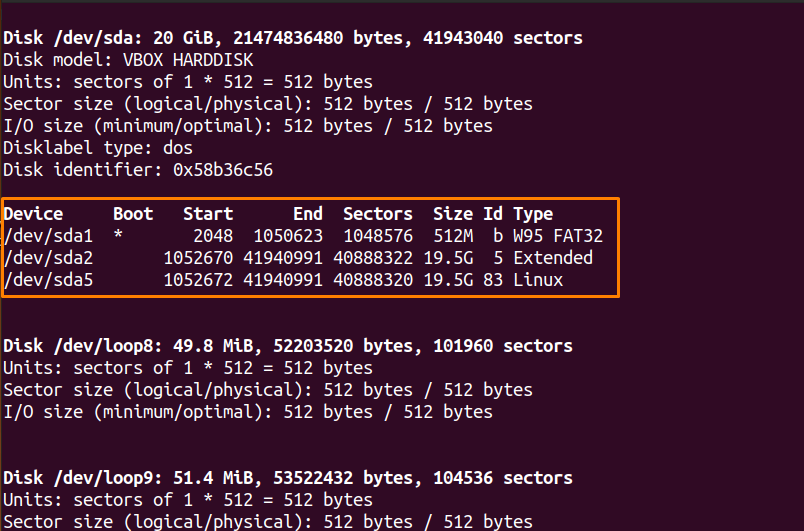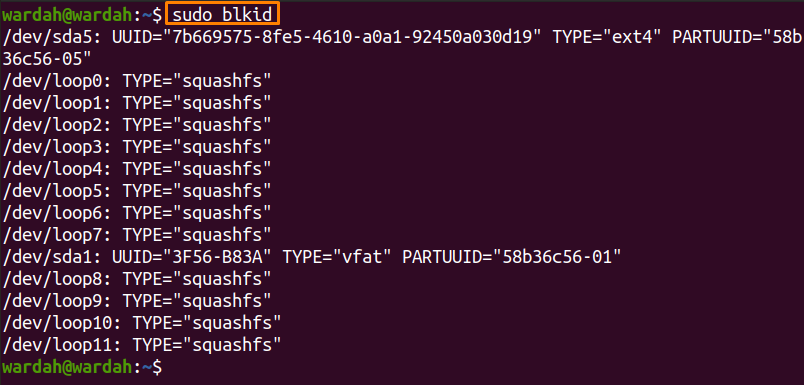Multiple types of disks can be mounted, such as USB, flash memory disk, external hard drives, etc. When a disk or drive is unmounted, it prevents the data from the device.
In the Linux system, there are several mounted and unmounted devices. The mount command helps to mount while the umount command unmount the storage drives or filesystem.
How do I show unmounted drives in Linux
There are several ways to address the list of unmounted drives.
Let’s check how we can do it:
How to show Unmounted drives using the “lsblk” command:
The “lsblk” command-line tool is used to list down information about all the present or defined block devices.
To show unmounted drives, open the terminal and type:
How to show Unmounted drives using the “fdisk” command:
The format disk or fdisk is a Linux menu-driven command-line tool to create and utilize the disk partition table. Use the “-l” option to read data from the /proc/partitions file and display it.
You can also specify the disk name with the fdisk command.
To show the partition table of all the devices, use the following command:
How to show Unmounted drives using the “parted” command:
The “parted” command-line utility is popular for managing the partitions of a hard disk. It helps the user to shrink, extend, add or delete the partition according to the requirement.
Use the “parted” command to show unmounted drives as well:
How to show Unmounted drives using the “blkid” command:
The “blkid” command-line utility works with the libblkid library that contains block type information.
To display block device information using the “blkid” command tool, use:
Conclusion:
Your device may contain mounted and unmounted devices, which means some files or drives are accessible, and some are not. The unmount drives are not accessible for the system even if they cannot transfer the files or connect with other system files.
To show the unmounted devices, we have multiple command-line tools. The guide has mentioned the most straightforward approaches to get them.





